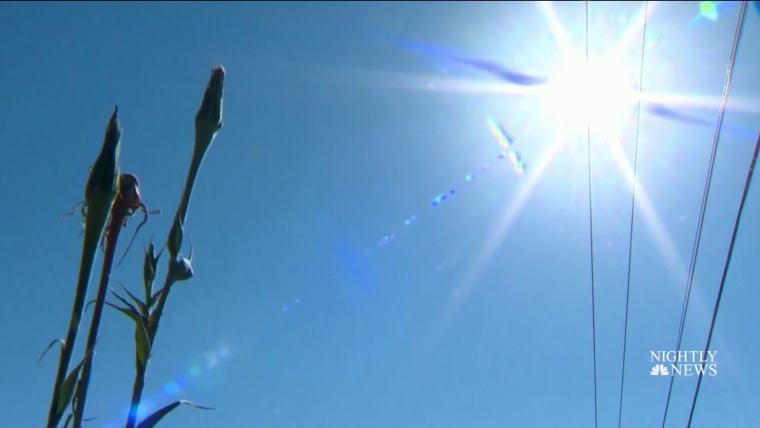On Friday, Death Valley, California, hit 130 degrees.
On Saturday, Las Vegas tied its hottest temperature, hitting 117 degrees, and Utah also tied its statewide record, hitting 117 in St. George.
On Sunday morning, nearly 30 million people remained under heat alerts across several Western states, where temperatures were forecast again soar to 10 to 20 degrees above average.
Las Vegas was forecast again to climb to near 117 degrees. If that happened for the second time in a row, it would be the first time in recorded history.
And all eyes were on Death Valley to see whether it would hit 130 degrees again for the second time in three days, or perhaps higher.
Death Valley is considered the hottest place in the world — it hit 134 degrees back in 1913. No reliable weather station has recorded a hotter temperature on Earth.
Overnight lows have also been very warm. Lows are failing to drop below the 90s in desert locations and below the 80s in several larger metro areas. When overnight hours provide little relief, it can strain infrastructure and increase the risk for heat illness.
Las Vegas, in fact, cooled down only to a suffocating 94 degrees Sunday morning, 1 degree shy of its warmest low of 95 degrees. The dangerously high temperatures are expected to last through the first half of the week for most of the Western region.
But parts of the desert Southwest and the Four Corners region of Colorado, Nevada, Utah and New Mexico may get some heat relief in monsoon showers and thunderstorms. They would be welcome after the most recent indicators revealed that a staggering nearly 95 percent of the West is in drought.
And the heat has continued to fuel the wildfire risk out West.
On Saturday, the Bootleg Fire in Oregon spread rapidly, and the Beckwourth Complex fire in northern California doubled in size. Two firefighters were killed fighting blazes in Arizona.
Because of climate change, heat waves are happening more frequently and lasting longer, and they are increasingly more intense. A study by World Weather Attribution, an international climate change institute, found that the Pacific Northwest heat wave at the end of June would have been "virtually impossible" without climate change. The warmer atmosphere, because of human-induced warming, made the heat wave 150 times more likely and on average 4 degrees hotter compared to the 1800s, it found.
The U.S. also just recorded its hottest June on record.
U.S. - Latest - Google News
July 12, 2021 at 01:07AM
https://ift.tt/3yMyAm5
Death Valley hits 130 degrees as relentless Western heat wave adds fuel to wildfires - NBC News
U.S. - Latest - Google News
https://ift.tt/2ShjtvN
Shoes Man Tutorial
Pos News Update
Meme Update
Korean Entertainment News
Japan News Update
Bagikan Berita Ini
















0 Response to "Death Valley hits 130 degrees as relentless Western heat wave adds fuel to wildfires - NBC News"
Post a Comment